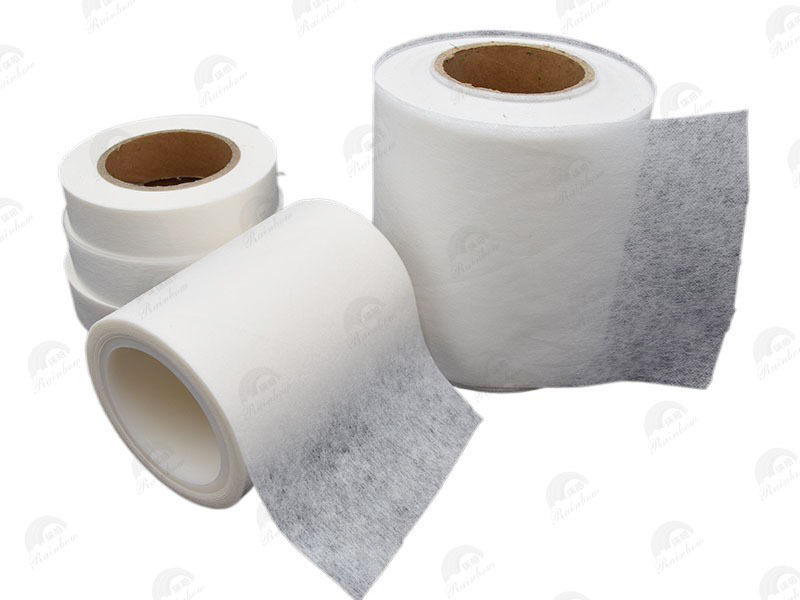How to Choose the Right GRS Certified Nonwoven Interlining for Your Sewing Projects
Release time:
2025-06-03
How to Choose the Right GRS Certified Nonwoven Interlining for Your Sewing Projects
Table of Contents
- Introduction to GRS Certified Nonwoven Interlining
- Why Choose GRS Certified Materials?
- Types of Nonwoven Interlining
- Factors to Consider When Choosing Interlining
- Application Techniques for Nonwoven Interlining
- Tips for Working with Nonwoven Interlining
- Sustainability in Sewing
- Frequently Asked Questions
Introduction to GRS Certified Nonwoven Interlining
In the world of sewing, the choice of materials can make or break a project. **GRS certified nonwoven interlining** has gained popularity due to its quality and sustainability. The Global Recycle Standard (GRS) certification ensures that materials are sourced responsibly, making it an ideal choice for environmentally conscious creators. This article will guide you through the process of selecting the right GRS certified nonwoven interlining for your sewing projects.
Why Choose GRS Certified Materials?
Opting for GRS certified materials presents numerous advantages. Firstly, it guarantees that the interlining you choose has undergone rigorous standards for environmental practices, social responsibility, and chemical usage. **Sustainability** is essential in today’s textile industry, as consumers increasingly prioritize eco-friendly options. GRS certification not only supports your personal values but also contributes to a larger movement towards a greener planet.
Types of Nonwoven Interlining
Understanding the different types of nonwoven interlining is crucial in making the right choice for your sewing projects. Nonwoven interlining typically falls into two categories: fusible and non-fusible.
Fusible Interlining
Fusible interlining is coated with an adhesive on one side, allowing it to bond with the fabric when heat is applied. This type is ideal for projects requiring additional support and structure. **Fusible interlining** is commonly used for collars, cuffs, and waistbands, providing a crisp finish that enhances the overall appearance of the garment.
Non-Fusible Interlining
Non-fusible interlining, on the other hand, does not have an adhesive backing. It relies on sewing techniques to attach to the main fabric. This type is suitable for delicate fabrics that may be damaged by heat or adhesive. **Non-fusible interlining** is often used in lightweight garments to maintain flexibility and drape.
Factors to Consider When Choosing Interlining
When selecting the right GRS certified nonwoven interlining, several factors must be considered to ensure optimal results in your sewing projects.
Weight and Thickness
The weight and thickness of the interlining play a significant role in the final outcome of your project. **Lightweight interlining** is suitable for delicate fabrics, while heavier options provide greater structure and support. Assess the weight of the main fabric and choose an interlining that complements it for the best results.
Fabric Type
Different fabrics respond differently to interlining. Understanding the fabric type you are working with is crucial in selecting the right interlining. For example, **woven fabrics** may require a more stable interlining, while **knit fabrics** benefit from a lightweight, flexible option. Always consider the compatibility of the interlining with your main fabric.
Project-Specific Requirements
Each sewing project has unique requirements that dictate the type of interlining needed. For structured garments, firmer interlinings may be necessary, while softer garments may benefit from lighter options. Consider the finished look and feel you want to achieve, and choose an interlining that aligns with those goals.
Application Techniques for Nonwoven Interlining
Applying nonwoven interlining requires attention to detail to ensure a successful bond and optimal results.
Preparation
Before application, ensure that the fabric and interlining are pre-washed to avoid any shrinkage after sewing. Lay the fabric flat on a clean surface and cut the interlining pieces according to your project specifications. This preparation is essential for achieving a smooth finish.
Application
For fusible interlining, place the adhesive side against the fabric, and use a pressing cloth to protect the fabric during the application of heat. Use an iron set to the appropriate temperature for your fabric type and press firmly. Follow the manufacturer's instructions for the best results. For non-fusible interlining, carefully pin or baste the interlining to the fabric before sewing to ensure it remains in place.
Tips for Working with Nonwoven Interlining
To achieve the best results with GRS certified nonwoven interlining, keep the following tips in mind:
1. **Test Samples:** Always test a small sample of the interlining with your fabric before starting your project. This helps you assess how they work together and ensures you achieve the desired look and feel.
2. **Choose the Right Needle:** Using the appropriate sewing needle is crucial when working with interlining. A universal needle is a good choice for most fabrics, but specialty fabrics may require specific needle types.
3. **Use Quality Thread:** Quality thread can make a significant difference in the outcome of your project. Opt for a thread that complements the weight and type of fabric you are sewing.
4. **Follow Manufacturer Instructions:** Always refer to the manufacturer's instructions for the specific interlining you are using. This includes guidelines on temperature settings, application techniques, and washing instructions.
Sustainability in Sewing
Sewing sustainably goes beyond selecting GRS certified materials. It encompasses the entire process, from sourcing fabrics to reducing waste. Consider incorporating remnants and leftover materials into your projects, and opt for eco-friendly sewing tools. By making thoughtful choices, you contribute to a more sustainable future in the textile industry.
Frequently Asked Questions
1. What is GRS certification?
GRS (Global Recycle Standard) certification ensures that materials are sourced responsibly, considering environmental impact, social responsibility, and chemical management.
2. How do I choose between fusible and non-fusible interlining?
Choose fusible interlining for structured garments and non-fusible for delicate fabrics that require flexibility. Consider the overall design and functionality of your project.
3. Can I wash garments made with GRS certified interlining?
Yes, but always follow the care instructions provided by the interlining manufacturer to maintain its integrity and performance.
4. How do I prevent puckering when using interlining?
To prevent puckering, ensure the interlining is appropriately applied and cut accurately. Use the correct pressure and temperature when applying fusible interlining.
5. Is GRS certified interlining more expensive than non-certified options?
While GRS certified interlining may have a higher upfront cost, the benefits of sustainability and quality often outweigh the price difference in the long run.
Conclusion
Choosing the right GRS certified nonwoven interlining for your sewing projects is crucial for achieving professional results while remaining committed to sustainability. By understanding the different types of interlining, considering essential factors, and applying effective techniques, you can elevate your sewing game. Remember that every project is unique, and taking the time to select the appropriate materials will not only enhance your creations but also support a healthier planet. Happy sewing!
GRS Certified Nonwoven Interlining
Previous Page
Latest News
Nantong Rainbow Technology Co., Ltd.
Telephone:+86-13587673537
E-mail:chrislc717@163.com
Address: Group 42, Xizansi Village, Xiting Town, Tongzhou District, Nantong City, Jiangsu Province

Copyright©2024 Nantong Rainbow Technology Co., Ltd. | Powered by www.300.cn
Copyright©2024 Nantong Rainbow Technology Co., Ltd.
Powered by www.300.cn




